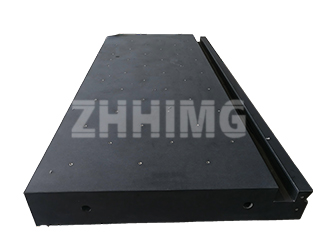Granite surface plates play a central role in precision inspection across industrial environments. Their stability, rigidity, and resistance to deformation make them indispensable tools for measurement, calibration, and quality control. Although a high-quality granite plate can serve reliably for many years, its accuracy will naturally decline over time as the working surface experiences wear. Understanding what affects that wear—and how to prevent it—is essential to maintaining long-term performance.
The most important factor influencing longevity is how the plate is used on a daily basis. Even the best granite will lose accuracy if the operator is not familiar with proper handling practices. Keeping the surface clean, protecting it from impacts, avoiding contact with sharp or abrasive tools, and preventing contamination from oils or chemicals are all basic steps that significantly reduce the rate of wear. Well-trained operators who follow proper procedures are key to preserving accuracy.
Load control also plays a major role. Granite plates are engineered with a specific load capacity determined by their size, structure, and material properties. When the working surface carries loads beyond its intended limit, even temporarily, the granite may deform locally. This type of deformation is subtle but permanent, and it directly affects flatness and repeatability in high-precision measurements. Ensuring that all workpieces, fixtures, and instruments stay within the recommended load range is critical for long-term dimensional stability.
Environmental conditions can further shape the lifespan of a granite plate. Although granite is known for its excellent stability, extreme or fluctuating temperatures, high humidity, and corrosive environments will accelerate degradation. A controlled, clean workspace helps maintain consistent measurement conditions and reduces the frequency of recalibration.
Routine inspection is part of responsible usage. All granite plates, regardless of quality, gradually wear with continuous work. Periodic checks performed by trained technicians help detect early signs of flatness deviation. When necessary, the surface can be re-lapped to restore precision, extending the effective life of the tool and ensuring it continues to meet measurement requirements.
By combining proper operation, controlled loading, stable environmental conditions, and regular professional maintenance, the service life of a granite surface plate can be significantly extended. These practices help protect the accuracy your processes depend on and ensure that the plate remains a reliable reference surface for high-precision measurement.
For calibration, resurfacing, and custom precision granite solutions, ZHHIMG offers certified expertise and high-performance products designed for demanding industrial applications.
Post time: Nov-21-2025

